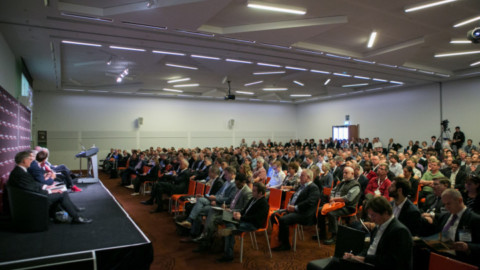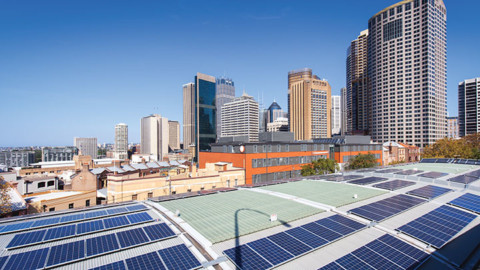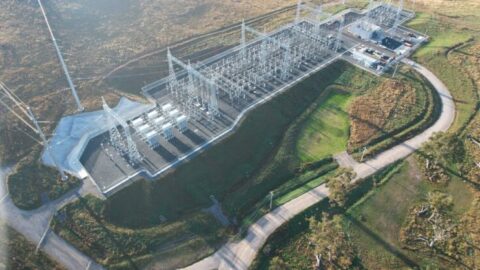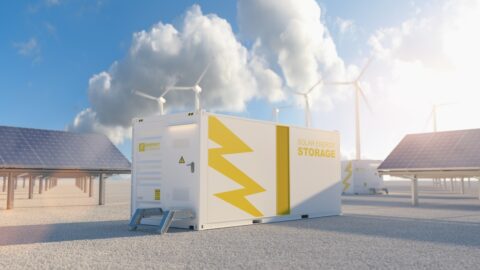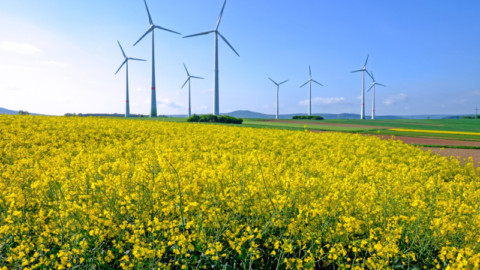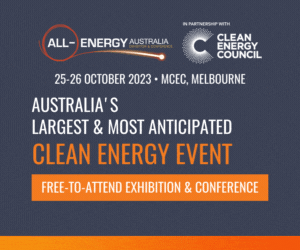By the Clean Energy Regulator
Australia is charging ahead to reach 82 per cent renewable energy supply by 2030 and reduce carbon emissions by 43 per cent below 2005 levels. Dominated by variable wind and solar, these targets require an increase in renewables of more than double the Clean Energy Regulator’s (CER) current output within seven years. Here, we discuss the surge in renewable investments, and the need for genuine engagement from industry and stakeholders to the community.
Federal Energy Minister, Chris Bowen, said the Australian Government’s $20 billion Rewiring the Nation commitment and sound policy settings are fast tracking the historic transition.
“In our first ten months, we have signed big multi-billion-dollar transmission deals with Victoria, Tasmania and New South Wales to connect huge hydro-electric resources and renewable energy zones to the National Electricity Market,” Minister Bowen said.
“Our state and territory-backed Capacity Investment Scheme will unlock around $10 billion of investment in clean, dispatchable power to support the energy grid changes, while industrial decarbonisation will finally begin in earnest thanks to our Safeguard Mechanism reforms.”
Australia has been a world leader in terms of new wind and solar capacity additions per person. We’ve had wins, but there are also challenges we’ll need to tackle to reach this goal. To achieve the nation’s plan, there is an opportunity for the renewables industry to do more to engage with all stakeholders and boost investment in large-scale wind and solar projects.
Turn around in investment
The Clean Energy Regulator’s (CER) December Quarterly Carbon Market Report (QCMR) highlighted a surge in large scale renewable energy investment and a recovery in rooftop solar installations. 4.3GW capacity of large-scale wind and solar projects reached final investment decision (FID) in 2022, a 50 per cent increase on 2021 with most in the second half of the year (H2).
A new large-scale investment boom cycle may be forming, similar to that observed in 2016-2018 when the industry delivered a significant increase in investment to meet the 2020 Large-scale Renewable Energy Target, see [Figure 1.0].

Figure 1.0: FID graph for EM 329DPI
There are promising signs for the rooftop solar industry as well, which rebounded strongly across the second half of 2022 resulting in 2.8GW installed capacity.
Australian households are increasingly embracing renewable energy solutions. Rooftop solar is an attractive investment for consumers combating rising energy costs. Zero interest loans may entice new purchases as interest rates increase. The increase in total renewables investment in H2 2022 was a good start to Australia’s journey to 82 percent renewables.
The need to step up
To enable a further sustainable increase in large-scale wind and solar, further investment is needed in the grid and big batteries. The New South Wales Eastern-section of Project EnergyConnect – the 900km long interconnector between Wagga Wagga in New South Wales and Robertstown in South Australia – is under construction.
On track for delivery by 2025, it’s received Australian and New South Wales Government approval and will facilitate energy sharing between New South Wales and South Australia for the first time. The Australian Renewable Energy Agency (ARENA) has announced $176 million in funding for eight grid-scale battery projects across Australia.
These batteries will be equipped with grid-forming inverter technology that provides essential system stability services. ARENA and the Department of Climate Change, Energy, the Environment and Water are also delivering 400 smaller community batteries to help lower electricity bills, drive down emissions and ease pressure on power grids.
All the signals are there for an increase in investment. Government targets, early exit announcements of coal fired generation and high wholesale electricity and large-scale generation certificate prices are positive signals. Key enablers will be ARENA investment in large scale batteries and proposed major grid upgrades.
The challenges
Large scale generation – from concept to first generation – takes time. There are many steps to go through including design, consultation, gaining development and connection approvals, obtaining financing and construction.
As projects get larger, for example the New England Solar Farm, they may reach some level of first generation around 18 to 24-months after construction commences, but reaching full generation will take longer. The step up in large-scale investment needs to happen between now and 2027 to be generating by 2030.
With a proposed large build of transmission in the Australian Energy Market Operator’s Integrated System Plan, there will be competition for engineering, procurement, and construction (EPC) contractors and skills/labour. Key component availability and prices for wind and solar power stations are dependent on international supply chains rebounding from pandemic-related constraints.
To support domestic industry, the government has allocated up to $3 billion from the National Reconstruction Fund to pursue commercial opportunities for renewables and low emissions technology development and manufacturing. Fortunately, there are many large international renewables developers in Australia who have proven intent to invest here, supported by the favourable investment environment.
Genuine engagement
A critical success factor to boost investment in large-scale wind and solar projects is early and genuine engagement with all stakeholders. At the New England Solar Farm, east of Uralla on the lands of the Anaiwan and Gumbaynggirr people, which opened in March this year, Minister Bowen said, “Renewable energy and agriculture can not only coexist, they are inevitably intertwined partners in the future decades of our country.”
CER Executive General Manager, Mark Williamson, said genuine early engagement with First Nations peoples is critical. “Australia’s transition to renewables requires genuine consultation with First Nations peoples and ensuring they have adequate input in the planning process by integrating their skills and knowledge,” Mr Williamson said.
“This is critical in understanding and respecting the landscape, identifying cultural heritage sites, and providing improved access to such sites.” Other key stakeholders include landholders, councils, community groups and local politicians. There’s much to be excited about in Australia’s renewable energy industries. CER will continue to report on investment trends and outcomes in our QCMRs.




